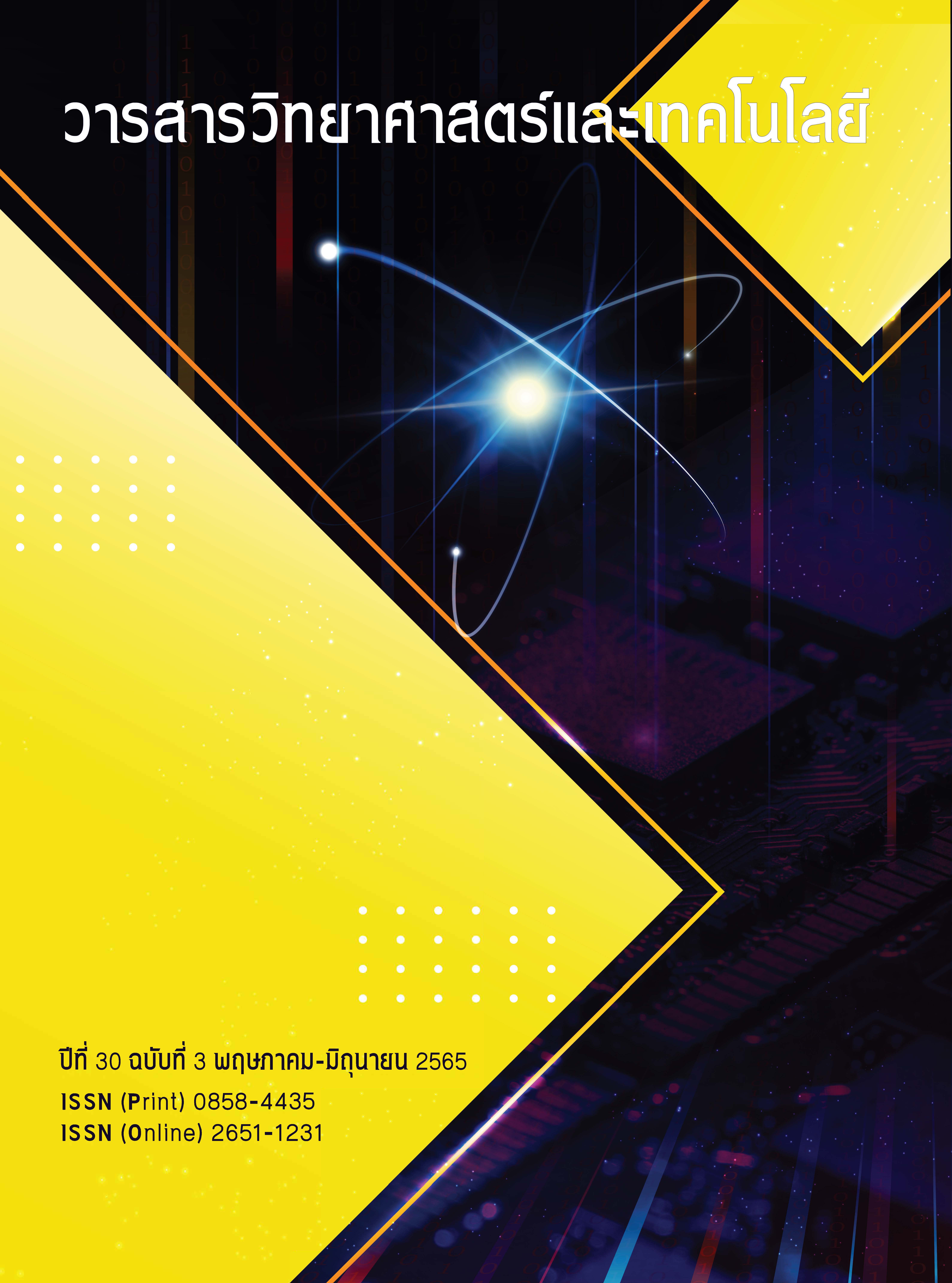Development of Trunk Muscle Exercise Machine
Main Article Content
Abstract
Regular exercise is recommended for being healthy and maintain a well-being life. Trunk muscles are one of the most important muscles which are responsible for balancing and stability. Strengthen these muscles help to improve daily activities and prevent back injury. Therefore, we developed the trunk muscle exercise equipment (TMx) and evaluated the usability of the machine. First, the safety of the equipment was analysed including stress and safety factors. Secondly, the spring that attached to the strain gauge load cell was validated. The spring system was adjustable to increase or decrease resistant for exercise training. Finally, the usability of TMx equipment and software were assessed for the trunk muscle workout. From the safety evaluation of the TMx seat, we used an engineering analysis software based on a 100 kg person. The result showed that the seat could support the weight with the maximum stress of 108 MPa and the factor of safety is equal to 2.315. The validation and calibration of the spring system showed that the spring constant value was 3.31 N/mm. The calculation of forces from spring extension and from load cell were close with the difference is not over than 1.7%. Furthermore, the exercise equipment was easily adjusted to the forward and backward modes for trunk muscle exercise. The software was able to determine the force during the exercise workout. In conclusion, the developed machine (TMx) is safe with high validity of the spring-force measurement system. The adjustability of the TMx mode is easy and can be applied for the abdominal and trunk muscle exercises. However, further assessment is required in the large numbers of healthy volunteers in order to elucidate its effectiveness.
Article Details
References
Chang, M., Kim, H., Shigematsu, R., Nho, H., Nishijima, T. and Tanaka, K., 2001, Functional fitness may be related to life satisfaction in older Japanese adults, Int. J. Aging Hum Dev. 53(1):35-49.
Warburton, DE., Nicol, CW. and Bredin, SS., 2006, Health benefits of physical activity: the evidence. CMAJ. 174(6):801-9.
Chen, MS., Lin, TC. and Jiang, BC., 2015, Aerobic and resistance exercise training program intervention for enhancing gait function in elderly and chronically ill Taiwanese patients, Public Health.129(8):1114-24.
Kibler, W. B., Press, J., & Sciascia, A. (2006). The role of core stability in athletic function. Sports Medicine, 36(3), 189–198. https://doi.org/10.2165/00007256-200636030-00001
Barati, A., SafarCherati, A., Aghayari, A., Azizi, F., & Abbasi, H. (2013). Evaluation of relationship between trunk muscle endurance and static balance in male students. Asian Journal of Sports Medicine, 4(4). https://doi.org/10.5812/asjsm.34250
Vinstrup, J., Sundstrup, E., Brandt, M., Jakobsen, M. D., Calatayud, J., & Andersen, L. L. (2015). Core muscle activity, exercise preference, and perceived exertion during core exercise with Elastic Resistance Versus Machine. Scientifica, 2015, 1–6. https://doi.org/10.1155/ 2015/403068
Hung, K.-C., Chung, H.-W., Yu, C. C.-W., Lai, H.-C., & Sun, F.-H. (2019). Effects of 8-week core training on core endurance and running economy. PLOS ONE, 14(3).https://doi.org/10.1371/journal.pone.0213158
McGill S., 2007, Low back disorders:evidence-based prevention and rehabilitation, Human Kinetics.
Brouns, F., Saris, WH. and Rehrer, NJ., 1987, Abdominal complaints and gastrointestinal function during longlasting exercise, Int J Sports Med. 8(3):175-89.
Leslie, BR., 1983, Exercise-induced abdominal pain, JAMA. 250(24):3283.
McGill, SM., Grenier, S., Kavcic, N. and Cholewicki, J., 2003, Coordination of muscle activity to assure stability of the lumbar spine, J Electromyogr Kinesiol.
(4):353-9.
Chang, WD., Lin, HY. And Lai, PT., 2015, Core strength training for patients with chronic low back pain, J. Phys Ther Sci.27(3):619-22.
Martuscello, JM., Nuzzo, JL., Ashley, CD., Campbell, BI., Orriola, JJ. and Mayer, JM., 2013, Systematic review of core muscle activity during physical fitness exercises, J. Strength Cond Res. 27(6):1684-98.
Hamid, A., Patar, MNAA. and Ayub, MA., 2012, Force Sensor Detection and Performance Evaluation of New Active System Ankle Foot Orthosis, Procedia Engineering. 41:510-15.
Wang, M-H. and Su, Y-T., 2012, Using extension method for health analysis system of a fitness device, Expert Systems with Applications. 39(17):12833-40.
Müller, I., Machado de Brito, R., Pereira, C. and Brusamarello, V., 2010, Load cells in force sensing analysis - Theory and a novel application. Instrumentation & Measurement Magazine, IEEE. 13:15-19.


